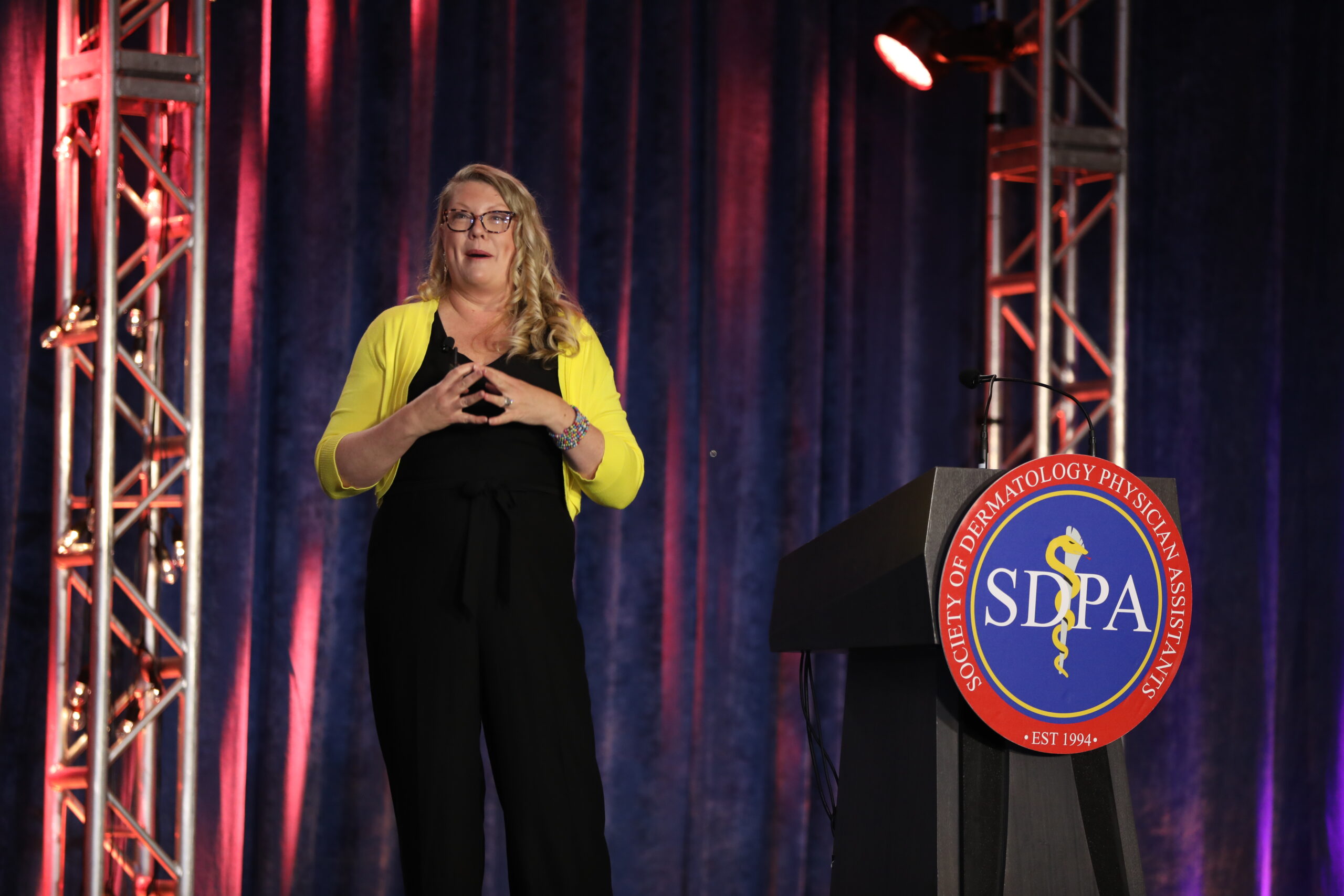Not Your Mama’s Acne and Rosacea Regimen: Shanna Miranti, MPAS, PA-C, Shares a Fresh Perspective on Treating Familiar Conditions
Shanna Miranti, MPAS, PA-C, gave an engaging presentation on acne and rosacea therapy at the SDPA Annual Summer Dermatology Conference in Austin. She reminded the audience tretinoin became a prescription medication 50 years ago. While still one of the first-line medications for acne patients, it is vital to stay updated with new medications and formulations coming on the market. It is key to keep in mind most patients who are coming in for the treatment of their acne likely have seen a few providers and tried many products before they present to the dermatology provider. In addition, it is probable that young patients are influenced by social media before coming to the office. Ms. Miranti emphasized that “We should be the influencers of these patients” who guide their expectations and help direct them to more relevant therapies.
COVERAGE: SDPA Annual Summer Dermatology Conference, June 16-19, 2022, Austin, Texas
The approach to the acne patient should always begin with utilization of the 2016 acne treatment guidelines. Knowing what patients have tried and failed and having different treatment regimens in each acne subcategory will help guide to the best therapy. Topical treatments with retinoids remain the mainstay for treatment of the mild acne patient, though Ms. Miranti emphasized not every patient should be prescribed a generic tretinoin and encourages providers to become familiar with the newer formulations of tretinoin products. When treating the patient with severe acne, isotretinoin should always be a part of the plan, unless the medical status precludes the patient from being prescribed this medication. Isotretinoin is a “life changing medication”—Ms. Miranti recommends all acne prescribers become familiar with this medication.
Ms. Miranti reviewed each subcategory of acne and provided treatment recommendations within each. She also went on to review six new medications that have become available since 2019. Pre-teen acne (ages 9-12) is on the rise and approach to treatment of this population was highlighted next. Newer vehicles that might be more tolerable for these patients who are “tender skinned” may be of benefit. It is best to keep regimens simple in this age group, and as patients of this age group tend to be “pickers”, it is important to look for secondary bacterial infections. Additional tips Ms. Miranti reviewed include utilizing aestheticians for comedone extractions, AHA/BHA washes to help break up the pilosebaceous unit, and keeping pityrosporum folliculitis in your differential. Additional topics of discussion included treatment of female hormonal acne and treating acne in patients of color. Finally, Ms. Miranti reviewed numerous pearls of wisdom in the approach to rosacea treatment.
Byline: Sarah B.W. Patton, PA-C
Pictured: Shanna Miranti, MPAS, PA-C
